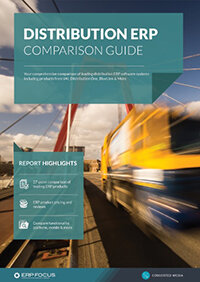Identifying the right distribution ERP for your business
The distribution business will never provide certainties, but the right ERP can help increase profitability and decision making in the face of uncertainty. However, the wrong distribution ERP system can leave you out of pocket and in the mire.
Inventory analytics
Distribution inventory must turn constantly. Be sure the ERP you choose has excellent inventory analytics. You may want to look at overall inventory to be sure the financial turnover meets your plans. You may want visibility for every SKU as well. If you bought 500 kg for a certain customer, you need to know if they actually placed an order for 500 Kg. If not, you need to immediately find another customer or arrange to return the surplus while it still has value.
Sales visibility
You may have multiple sales orders in process at any moment, which come quickly from a variety of channels. Your distribution ERP has to help manage those orders. Orders must be in your system quickly and accurately and must be immediately visible to the people who perform the actual fulfillment activities.
Recommended reading: Seven steps to picking the perfect distribution ERP for your business.
Your committed stock must also be visible to salespeople and customers who might want the same products; this ensures no one tries to place an order that cannot be filled. Some orders have special qualifiers attached, such as all lines delivered at once. Your pick and delivery crews must see those qualifiers and never miss a customer requirement.
Calculating ROI
Like anything you purchase, a distribution ERP must provide a sufficient return on your investment. The cost of ownership, including up-front costs and ongoing expenditures, must be less than the benefits provided. You will need to measure those benefits. How many more orders can you accept and fulfill on time? What costs have you saved through the ERP? Have you been able to work in any new business areas because of the ERP? Have you increased your revenue? Are your financial statements available more quickly and more accurately?
The key to a successful ERP selection is identifying the differential system characteristics that matter to you and your business.
Integration requirements
Your distribution ERP must support integration with other core systems you utilize. You might have an automatic weighing system in your conveyor now. It should link to the ERP with little difficulty to post the weights and calculate shipping costs as if they were a single system. You could have a transportation management system in mind for next year. ERP integration should allow you to connect future systems in your technology roadmap.
These are just a select few areas which allow distribution companies to differentiate ERP systems from one another. The key to a successful ERP selection is identifying the differential system characteristics that matter to you and your business.
Free white paper

7 steps to selecting distribution ERP
Get expert advice on distribution ERP selection and requirements analysis

Featured white papers
Related articles
-

Three questions to ask potential distribution ERP vendors
Ask potential distribution ERP vendors these questions to make sure you get a product that suits ...
-

Secret KPI: Why Your ERP Implementation Team Matters More Than Software
Learn how Godlan ensures successful ERP implementation for manufacturers with proven strategies &...
-

Distribution ERP: CRM tools for customer service success
Learn about two of the most important customer service tools in distribution ERP CRM modules and ...


